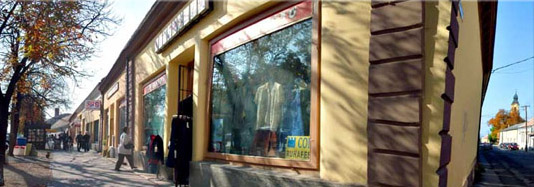| |
Hévíz and surrondings
|
HÉVÍZ
Our natural treasure: The Lake of Hévíz

|
|
The lake with a surface of 10.8 acres is the largest hot-water lake of Europe with healing power, surrounded by 123.5 arces of forest. The Lake of Hévíz, besides its healing power, is quite a peculiar formation. According to contemporary data, it has a depth of 126 feet. The water of the Lake is heated by geotermic energy, its temperature results of the hot water and karst water mixing together. The water temperature in the major part of summer is around 33-35 oC, in autumn and winter, depending on weather, it is lower but does not fall below 22 oC.
|
 |
 |
The composition of the water has been examined since the end of the 18th century, however, the exact analysis was not carried out until the second half of our century. According to this analysis, the constituents dissolved in 1 l of water in mg is the following:
|
|
Cations
|
Anions
|
| K+ |
7,4 mg/l
|
F- |
1,3 mg/l
|
| Na+ |
24,0 mg/l>
|
Cl- |
27,0 mg/l
|
| NH2+ |
0,1 mg/l
|
Br- |
0,12 mg/l
|
| Ca2+> |
86,0 mg/l
|
I-> |
0,023 mg/l
|
| Mg2+ |
35,0 mg/l
|
S2- |
2,5 mg/l
|
| Fe2+ |
21,3 mg/l
|
SO42- |
51,0 mg/l
|
| |
|
HCO32- |
427,0 mg/l
|
| Total: |
173,8 mg/l
|
Total: |
509,15 mg/l
|
| Radium emanation:: 0,22-28 millicurie/l |
|
The bathing cure is recommended in the following cases (indications):
- vertebral deterioration and articulatory diseases
- osteoporosis
- chronic aricularory inflammations e. g.: Bechterew, PCP
- tissue rheumatism
- diseases of vertebral disk
- recuperation (after accidents, orthopaedic surgeries)
- arthritis
- stress, overloads
- static disorders, posture disorders
|
|
In the following diseases, the bathing cure is not recommended:
- malign tumors
- cardiac insufficiency
- acute infectious diseases
- grave asthma
- pregnancy
- untreated thyroid overdrive
- open wounds
|
 |
The effect of the healing cure of Hévíz is complex, where there is a clearly defined effect of the water temperature, chemical composition, the sludge, the air, the natural radioactive radiation, the climate.
Other informations: www.heviz.hu
|
|
The sights of the surroundings:
KESZTHELY, the capital of Balaton
|
|

|
Situated at 8 km away from Hévíz. University city, the most significant cultural center of the area. Here can be found the Festetics-Castle which is the most beautiful baroque caslte of the country. The castle was began to be built in 1745, it reached its present form between 1884 and 1887l. The building with 101 rooms serves today as a museum and conference center. Its most valuable roob is the library hall built between 1799 and 1801, whose furnitures are original with up to 86.000 pieces of books.
|
 |
|
SÜMEG

|
 |
In Sümeg, there is the largest castle ruin which remained in the bestcondition in the Balaton Uplands. The Castle of Sümeg is built in the altitude of 885 feet, on the rocks emerging 285 feet from the surroundings.During summer, the visitors are entertained with medieval tournaments.
|
|
BADACSONY

The hillside with the basalt organs and the arranged rows of vines with the small white cellars gives a fable-like view. A most ancient wine is the "Kéknyelu",the best known is the 'szürkebarát". The Kisfaludy-house built in the hillside gives an unforgettable panorama.
|
|
SZIGLIGET

The ruins of the castle built on the volcanic cone offer a commanding view to the Balaton.
|
|
TAPOLCA
|
 |
Its natural rarity, the cave with lakes was discovered in 1902. Its peculiarity is given by the greenish-colored lakes, on which you can row. The warm, humid air of the cave has very good effect on respiratory diseases.
|
|
Small-Balaton, Island of Kányavári:
|
|
The Island of Kányavár is a popular holiday place of the Small-Balaton. With its coninuous reed-plots, it provides unique habitation for birds nearing extinction, the various moorland animals and plants. Highly protected area.
|
 |
|
ZALAKAROS
 
The youngest town and the most dynamically developing thermal holiday resort of Zala county. Its name was written as Korus in 1254, which can be traced back to a person's name. The thermal water of 96°C rich in minerals was found in 1962 while searcing for crude oil. The construction of the thermal bath began in 1964 and it received the first guests on 1st of September in 1965.
|
|
BALATONEDERICS
|
|
|
The most important sight of the B</font><font face="Geneva, Arial, Helvetica, sans-serif">alaton-side place is the Africa-Museum. Its founder was dr. Nagy Endre, the famous Africa-hunter. He placed his valuable and special trophies, Tansanian ethnographic collection here.
|
oldal tetejére
|
|



